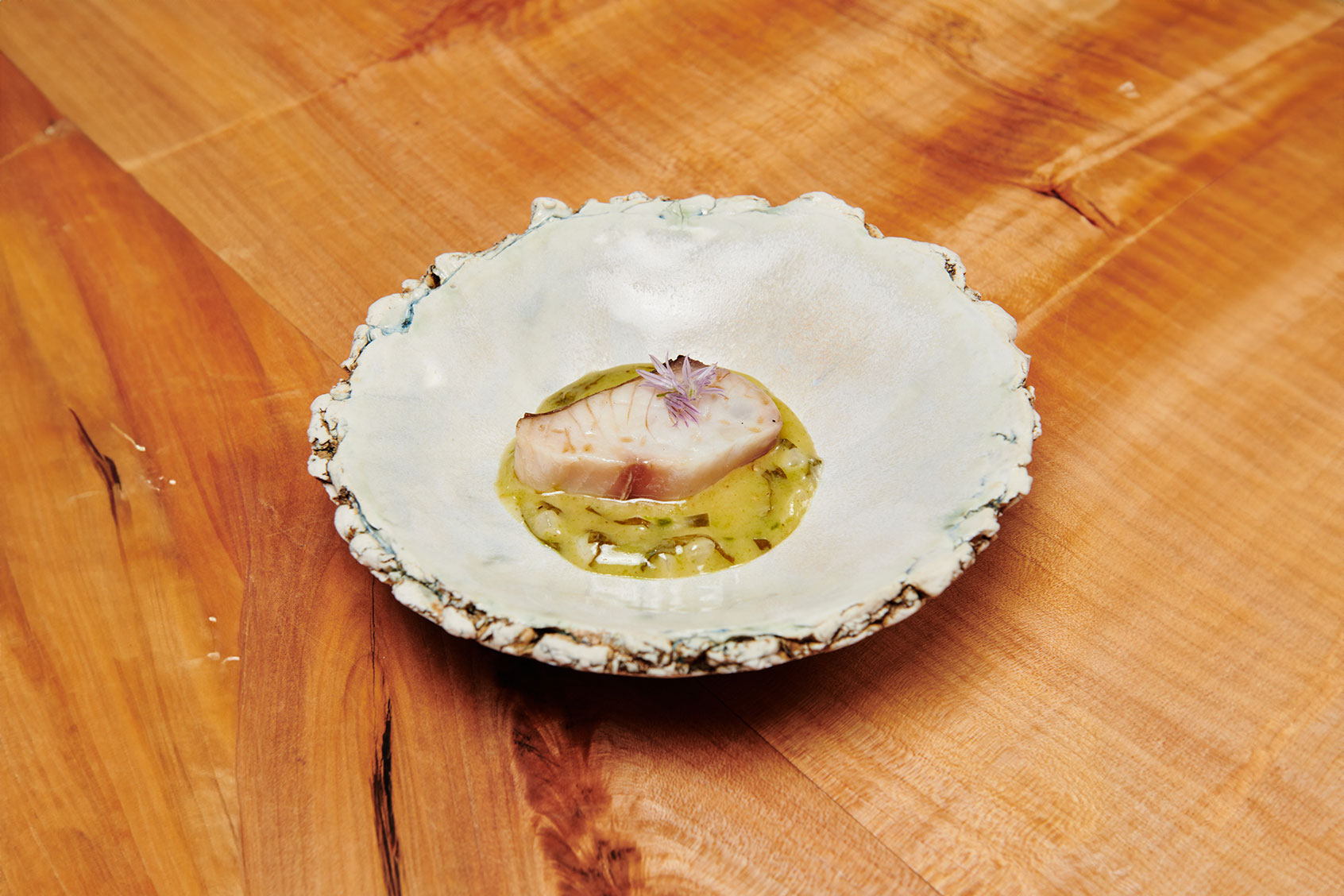Victoria Blamey has been one of the most sought-after chefs in New York City for over a decade now. Her career started a world away, though.
Blamey, who was born in Santiago, Chile, traveled throughout London, Australia and Spain in the beginnings of her career, working her way through the kitchen (and the world) alongside some of the most recognizable names in international cuisine.
As her technical abilities grew — primarily within the realms of fish cookery and pastry — Blamey began to take on the States, working at restaurants in New York City before becoming the executive chef at Chumley's, a classic tavern, where she became well-known and celebrated for her bold takes on meat-forward dishes, both traditional and re-imagined.
After that, she cooked at Fulgurances Laundromat, a Brooklyn outpost of a successful Paris restaurant. Soon after, she opened MENA, which was an absolute hit with critics, but unfortunately ended up closing its doors after just six months in 2022. Blamey said she was not involved in the decision, which was made by the hospitality group that leased the restaurant space, who cited “financial reasons” factoring into the closure.
Not soon after that, though, Blamey and chef Carlo Mirachi happened to collaborate — and Blanca 2.0 was born.
Mirachi is the executive chef and co-owner of Roberta’s — a nearly 15-year-old cult-favorite pizza stalwart that shares a space and address with Blanca — and his newest restaurant Foul Witch. In 2011, he won Food & Wine’s Best New Chef designation and his cooking was once deemed “kitchen poetry” by the New York Times.
He and Brandon Hoy originally opened Blanca in 2012. The restaurant secured two Michelin stars, but closed during the pandemic. It recently reopened earlier this spring with Blamey at the helm. In the intimate, 12-seat restaurant, Blamey serves an expertly crafted 18-course menu to great acclaim.
"This Bushwick counter has finally returned, and some things have not changed,” the Michelin guide noted. “You still have to walk through Roberta’s, past the roaring pizza ovens and through the backyard, to find this lofty space. The playlist is as high-energy as ever, and the mood is collectively lighthearted."
It continued: "The kitchen is now under the command of Chef Victoria Blamey, who brings her own style and story to this robust tasting menu. Oyster with kalamansi cream, Dungeness crab empanadas, and surf clams with nixtamalized sweet potato reflect wide-ranging inspiration; and something is always grilling, like dry-aged pheasant or grass-fed lamb."
Clearly, both Roberta's and Blanca are legendary restaurants putting out high-end food, just two sides of the same coin. As Forbes put it back in February in regards to their collaboration and the rebirth of Blanca after its temporary shuttering, the "stars have aligned."
Salon recently had an opportunity to speak with both Mirarchi and Blamey, talking about all things Blanca, their visions for what's to come, their "mascot" and so much more.
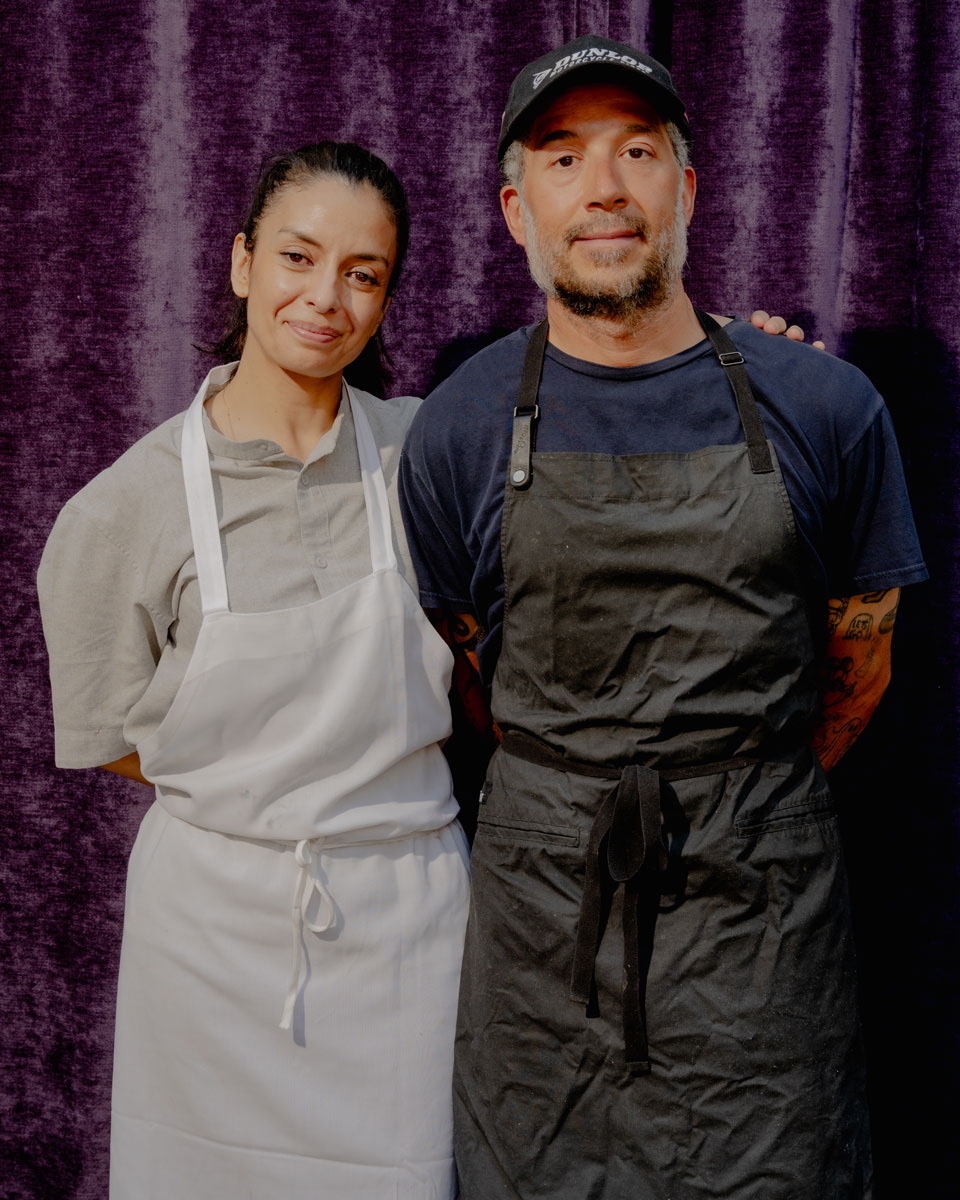 Chefs Carlo Mirarchi and Victoria Blamey (Courtesy of Blanca)
Chefs Carlo Mirarchi and Victoria Blamey (Courtesy of Blanca)
The following interview has been lightly edited for clarity and length.
Chef Carlo Mirarchi:
Salon: Over at Foul Witch — always loved that name — I'm struck by the "whimsical Italian" moniker. What differentiates that style from other Italian and Italian-American restaurants? Congratulations on the James Beard nomination, by the way!
CM: Thanks! I like to think that we take a pretty traditional approach while still trying to make things interesting and fun.
How would you describe the changes at Blanca over the years?
We have always been a restaurant driven by ingredients and that hasn’t changed, but our approach is constantly evolving. I have always cooked instinctively, whether that comes from place or memory, it doesn’t really matter. What does matter is constantly challenging those instincts in order to grow.
Bringing on Chef Victoria, who cooks in a similar way, is obviously a great change, but very much representative of what Blanca is as a restaurant at its core.
What led to Blanca's original opening?
We started doing a small menu once a week in Roberta’s and I think we got lucky. It was well received by the right people at the right time.
The fish on the wall is the same as the fish on the website landing page. What does that fish represent to Blanca?
The tuna was landed in Montauk, in 1978, I believe. It's been with us since day one. It's our official mascot! Good days or bad days, it’s always hung in there.
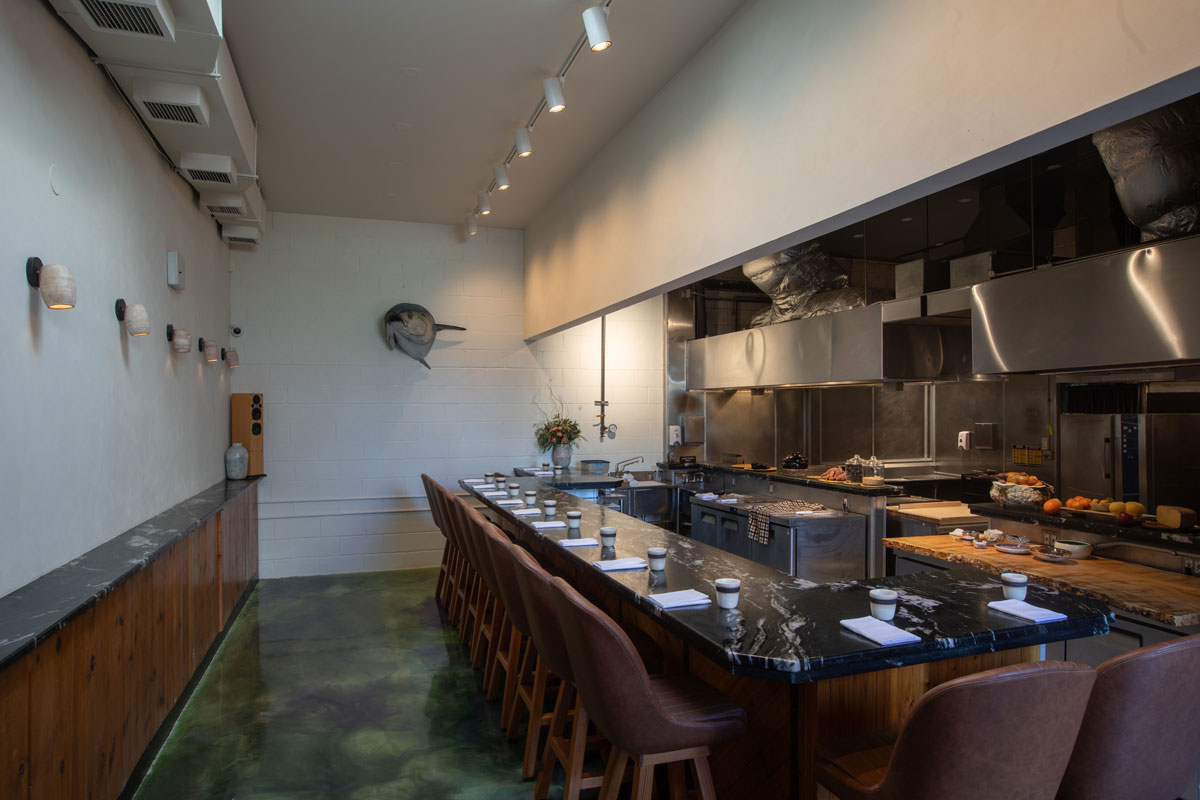 Blanca Restaurant Interior (Courtesy of Blanca/Alessandro Cinque)
Blanca Restaurant Interior (Courtesy of Blanca/Alessandro Cinque)
Blanca only has 12 seats. How does that impact both the service and the overall dining experience for the guests?
We are able to focus more on the individual guest experience each evening. It also allows us to secure ingredients and products that are in nominal supply, as well as highlight certain farmers and producers who work with more limited availability.
I know that the natural wine program is well-honed at Blanca. Can you tell me a bit about it? How does it differ from the Foul Witch wine menu?
Our wines serve to both highlight and compliment the food at Blanca and for the most part, to work within the environment of a tasting menu. Foul Witch has a lot of wines on the list that are just great and fun to drink, period, completely on their own, regardless of what you are eating.
Roberta's and Blanca couldn't be more different, but they have such a connection. Can you speak to that?
They do share a lot of the same DNA, and Victoria and I have a lot of the same ideas when it comes to food, especially in the context of a tasting menu and the rhythms you need to maintain to keep the palate engaged. We also both cook instinctually and I think guests can see that on the plate. The food isn’t an intellectual exercise, but rather comes from somewhere within.
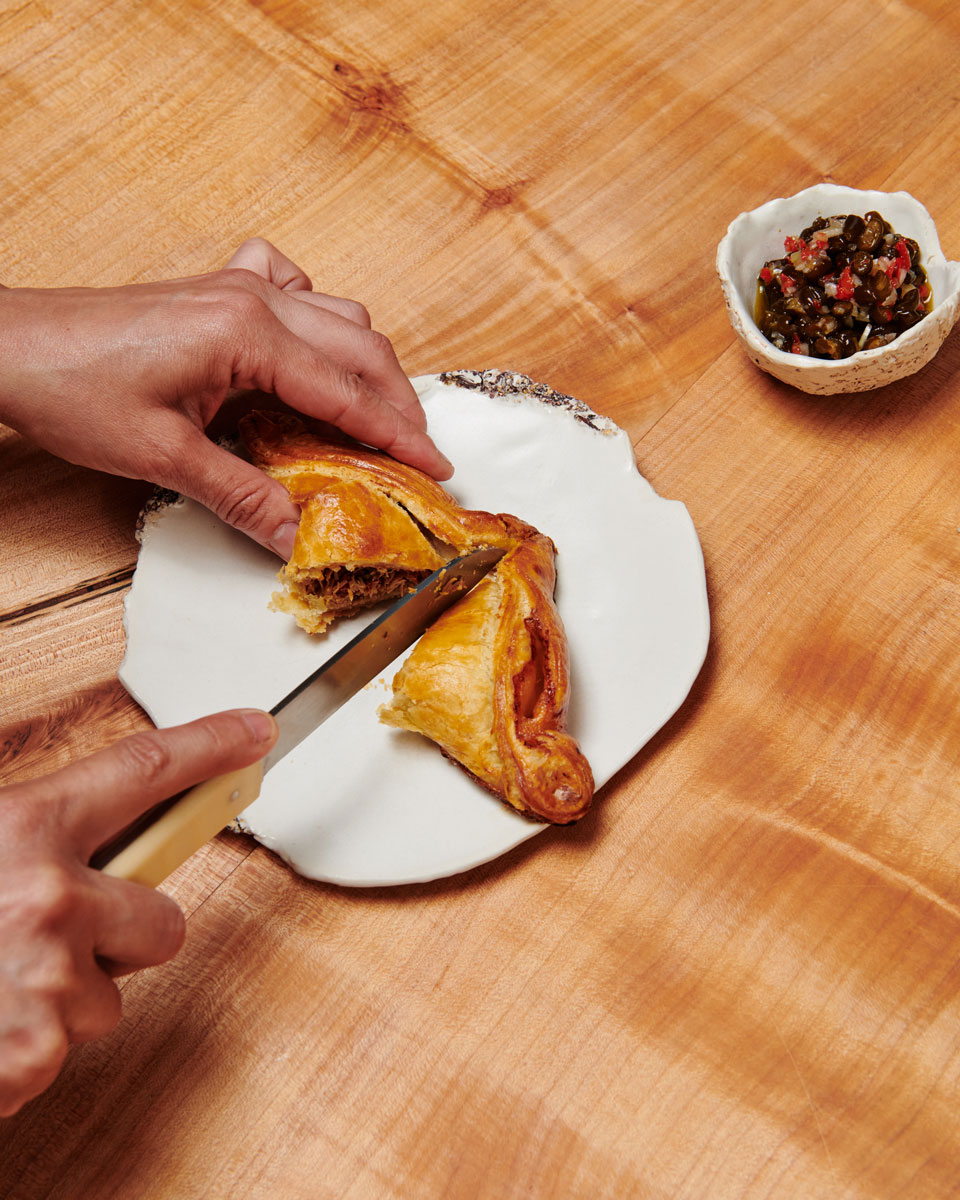 Crab empanada (Courtesy of Blanca/Todd Midler)
Crab empanada (Courtesy of Blanca/Todd Midler)
Chef Victoria Blamey:
Salon: What are some of your top, non-negotiable ingredients you work with on a daily basis?
VB: Olive oil, chiles, citrus, spices
What lessons and elements do you impart from your Chilean upbringing in leading a professional kitchen?
Not sure it's a Chilean lesson, but I guess a family lesson from my mother and that is to lead with intention and to be true to myself.
Want more great food writing and recipes? Subscribe to Salon Food's newsletter, The Bite.
Could you tell our readers a bit about your culinary background and pedigree? What came before Blanca?
There's so much out there already! It’s been a trip!
In a very concise way, I can tell you that I started working in England for two and a half years, then Melbourne in Australia. I have worked in Spain and in Miami very early on in my career and then I came to New York for reasons other than cooking and I stayed here for the longest time — 14 years.
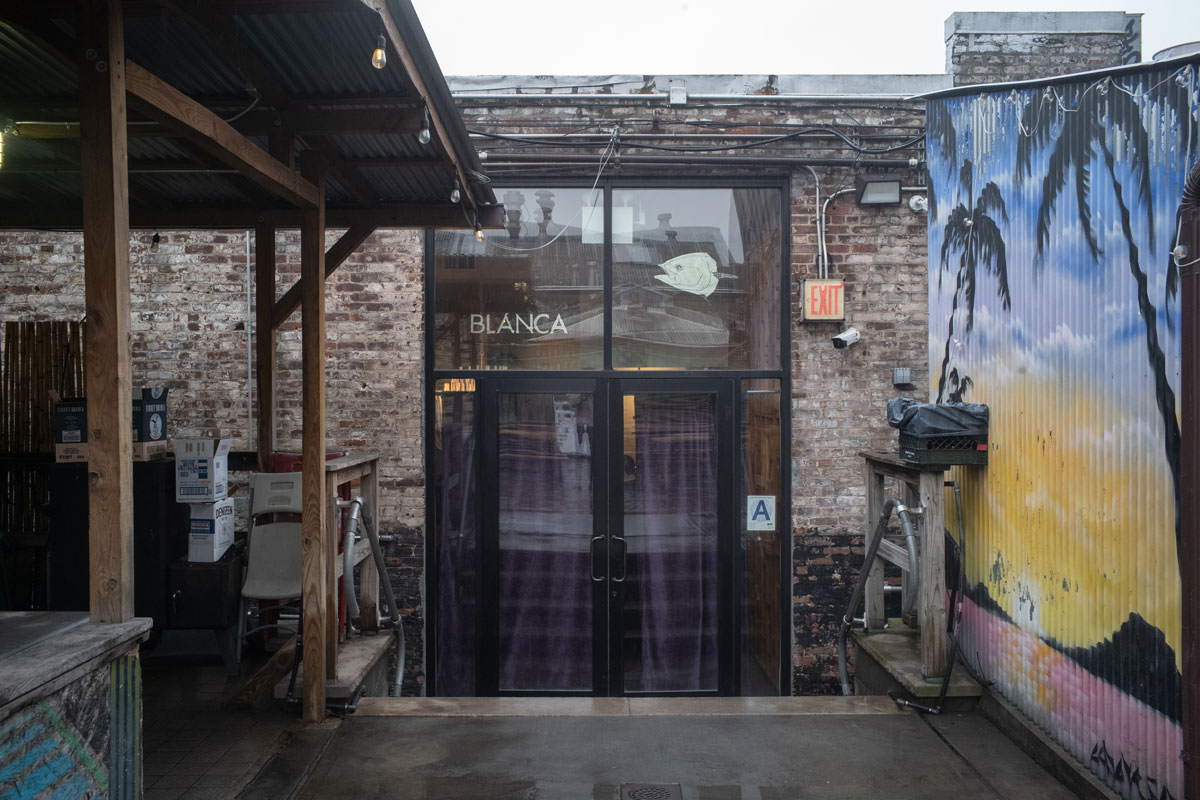 Blanca exterior/entrance (Courtesy of Blanca/Alessandro Cinque)
Blanca exterior/entrance (Courtesy of Blanca/Alessandro Cinque)
What can you tell me about how and when you began to work with Carlo Mirarchi in heading up Blanca after such a long COVID break?
We met in April 2023. I received a random call from a friend that we have in common. We were in conversation for months until we decided to work together in October 2023. We re-opened Blanca mid January 2024. It’s been an exciting challenge.
In The New Yorker, Helen Rosner said that Blanca "is not for beginners," referencing the "flavors that are strong, unexpected and occasionally disorienting." Do you feel that that sums up the food at Blanca well?
I think Blanca is a place to taste things that could be familiar to some, but always in a different and unexpected light. We are not trying to break off the mold intentionally.
I read that Blanca had "nominally Italian outlines. Do you feel as though you work along those lines in the current menu iteration?
Well, clearly my line is not Italian. Have I worked in an Italian restaurant in my life before? Yes. I think we are who we are in the space that we inhabit. The pastas are there as a reminder of the legacy of its founder, but I have never seen Blanca as one or the other.
In South America and Spain, people call the chef’s cuisine “Cocina de autor” and it always bothers me that here in the US, they try to box someone’s cuisine in such a simplistic way.
The current menu is 18 courses. Can you talk a bit about that progression?
Now we are actually at 15 [or] 16 and I think the progression is thought out, but not to the extreme. We take cuisine seriously, but not to the point of being dogmatic. I think we go with a feeling as a common denominator. Feeling the heat of a spice, feeling the temperature of the dish — then we see where it fits on the menu.
What stands out for you as a formative moment that got you into cooking or food at large?
I was studying history and I used to stay up late at night, not always studying or writing essays, but cooking. During one Christmas, I was obsessed with making Christmas Pudding [the Chilean version] and German ginger cookies. I was up until 4 a.m. because I told my mum to sell them in her office. Bear in mind, my mum had been working at that time for Nestle for 30 years and here comes her daughter asking her to sell Christmas puddings. They loved them so much, but [I] couldn’t keep up with production!
I guess my passion became a commitment. That’s when I knew I had to drop out of University and pursue cooking. It wasn’t so easy to realize. I always thought my options as a woman in a conservative country like Chile were limited. So my horizon had to be abroad.
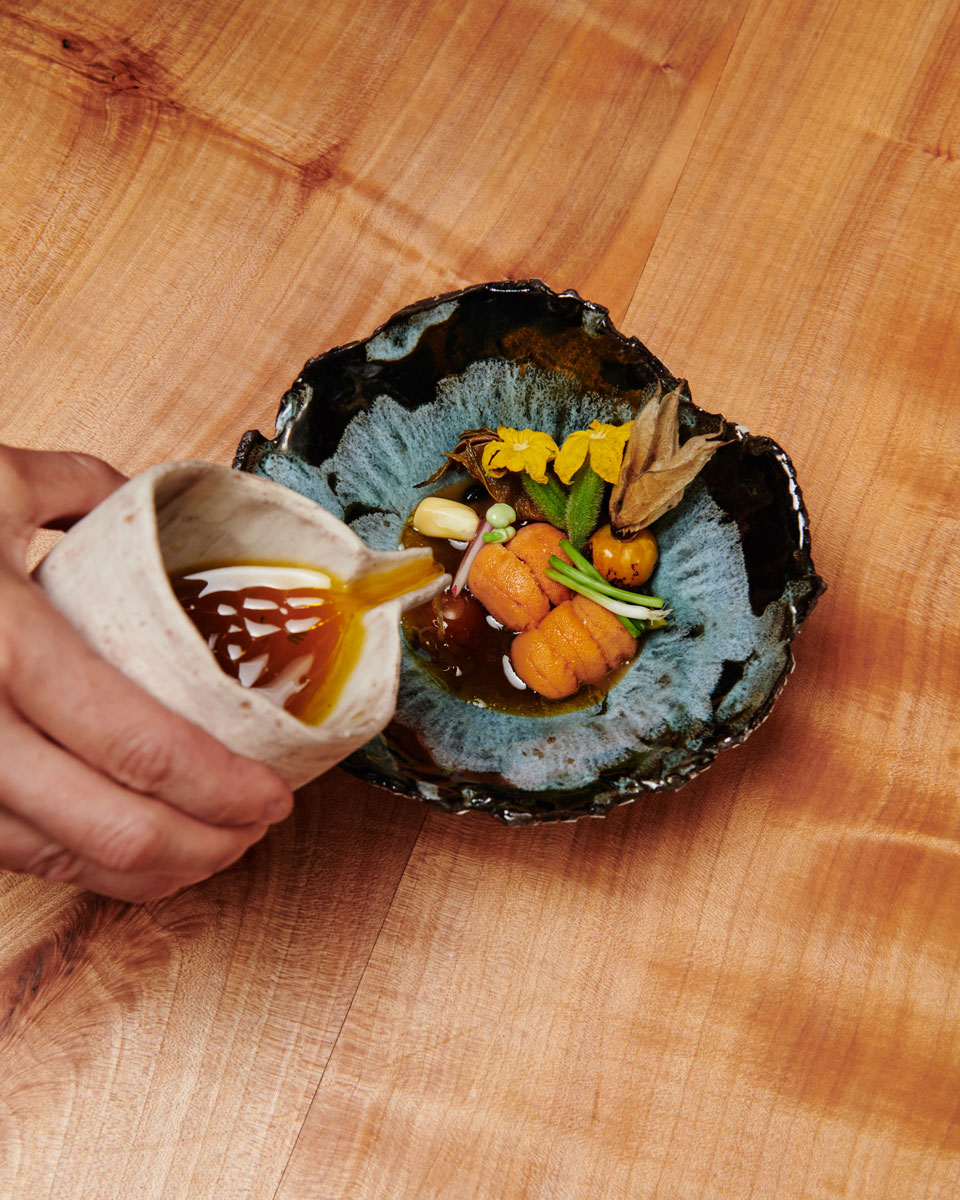 Ceviche (Courtesy of Blanca/Todd Midler)
Ceviche (Courtesy of Blanca/Todd Midler)
What is your favorite cooking memory?
My great aunt Filomena making empanadas and sweet tortillas with blackberry jam. All her cooking was just divine.
What’s your biggest tip for cutting down on food waste?
To challenge yourself, that creativity comes from moments where we are also “forced” to do something unexpected.
We need your help to stay independent
How do you practice sustainability in your cooking and in your restaurants?
It’s hard. I try to not have much waste, but regardless of how much waste we have, we do not have the infrastructure that can also facilitate that. If something so simple and old school like compost can not happen in this city, well that tells you how behind the US is. We cut budgets in a city like New York on compost — that’s so short-sighted to me.
How did your experiences at Chumley’s and all of the other restaurants you've worked at all coincide in your current work at Blanca?
I see them all as formation years. I’m still forming, always learning. Defining who I am through cooking is never ending.
You’ve received such rave reviews in your career and Blanca is obv. No exception. What’s next on the horizon for you?
I think that’s a very good question. Right now I’m trying to get Blanca where I think it can be and to make Blanca a fun and different spot for people to experience my cooking, the hospitality of the staff, the unique work of our cook and feel familiar with our faces.
In the future, I’m not so sure if I’ll be here 100% of my time. NY has changed a lot for me and perhaps I’m thinking where the next chapter of my life is. I’m going to be 45 this year and I think we all need time to see more and live a little more.
Read more
about this topic
